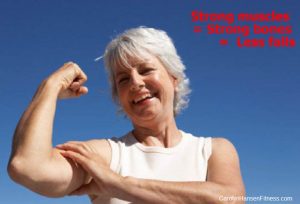
BONES ARE ALIVE
Bones take an active role in our health – they are not hard and lifeless as many believe them to be. They are living, growing tissue made up of 3 different components that keep them flexible and strong.
Collagen: our bones have a flexible framework because they contain the protein collagen.
Calcium-Phosphate minerals: to keep bones strong and hard
Living Bone-cells: like other tissue in your body, bone tissue is constantly being replaced with weakened sections removed and replaced with new tissue. You are constantly producing new bone.
Peak bone mass – the point at which you have the greatest amount of bone your body will ever have usually occurs sometime between the ages of 18-25. How much bone you have at the moment of “peak bone mass” determines to some degree how likely you will be to break a bone or get osteoporosis later in life. In fact, osteoporosis could be labeled a “young person’s disease” because you can trace its roots back before the age of 36 when the seeds of this insidious disease are sown.
OSTEOPOROSIS IS NOT A DISEASE OF THE ELDERLY
Truth is, osteoporosis is not a disease that just strikes little old ladies; it is a silent deadly thief that begins stealing away our bones starting early on in childhood at astonishing rates. Most people are not even aware of the amount of damage occurring in their bodies until the damage is done.
Poor lifestyle habits contribute to weakened bones. Nutrient void diets, excessive use of caffeine or alcohol and of course lack of exercise are all major offenders. Family history plays a role as well as certain diseases related to organs such as the liver or kidneys and others. Even repetitive use of medications can contribute to bone loss but the biggest contributor is a sedentary, inactive lifestyle.
The great news is that osteoporosis is not inevitable or a disease of the elderly, it can be prevented, slowed and even reversed if proper steps are taken now. The younger you start the better.
EXERCISE IS KEY
Studies reveal that the loss of muscle and bone strength are not the result of aging but merely the direct result of our inactive lifestyles. Unless we consciously set out to prevent muscle tissue loss, we lose as much as ½ our strength by the time we reach 65 years of age. The greater the muscle tissue loss the higher the incidence of weak, thinning, brittle bones because muscles are attached to bones. When a muscle is contracted against resistance it pulls on the bone, and this type of mechanical loading makes the bones grow thicker and gain mass to protect itself while under stress thus leading to stronger bone.
Although all forms of exercise have something to offer in regards to contributing to our health, not all of them are suitable and proper when it comes to strengthening bones. Activities such as walking, running, biking or swimming are great recreational activities but do not contribute what’s needed to stress the skeleton properly.
Strength training – some form of resistance training is what grows strong dense bones and strong toned muscles that protect against osteoporosis. Stronger bones and muscles helps improve balanced and coordination resulting in less bone shattering falls.
The equation is simple: Incorporating regular challenging strength training exercise throughout adulthood is key to keeping muscles and bones in peak condition.
We must pay attention to our muscle strength and bone density now if we want to enjoy our independence and stay “wildly active” not “mildly active” in our lives as we get older.
“Super Productivity Secrets” is the ultimate lifestyle, fitness and success library. It was written for entrepreneurs ready and willing to operate at full capacity. Discover the missing strategy that has kept you from reaching the level of success you dream about.